How to track user analytics in 2024
User analytics in 2024 requires advanced text analytics tools for AI SaaS. Phospho enables startups to gather insights from natural language interactions, refine AI models, and achieve faster product market fit.
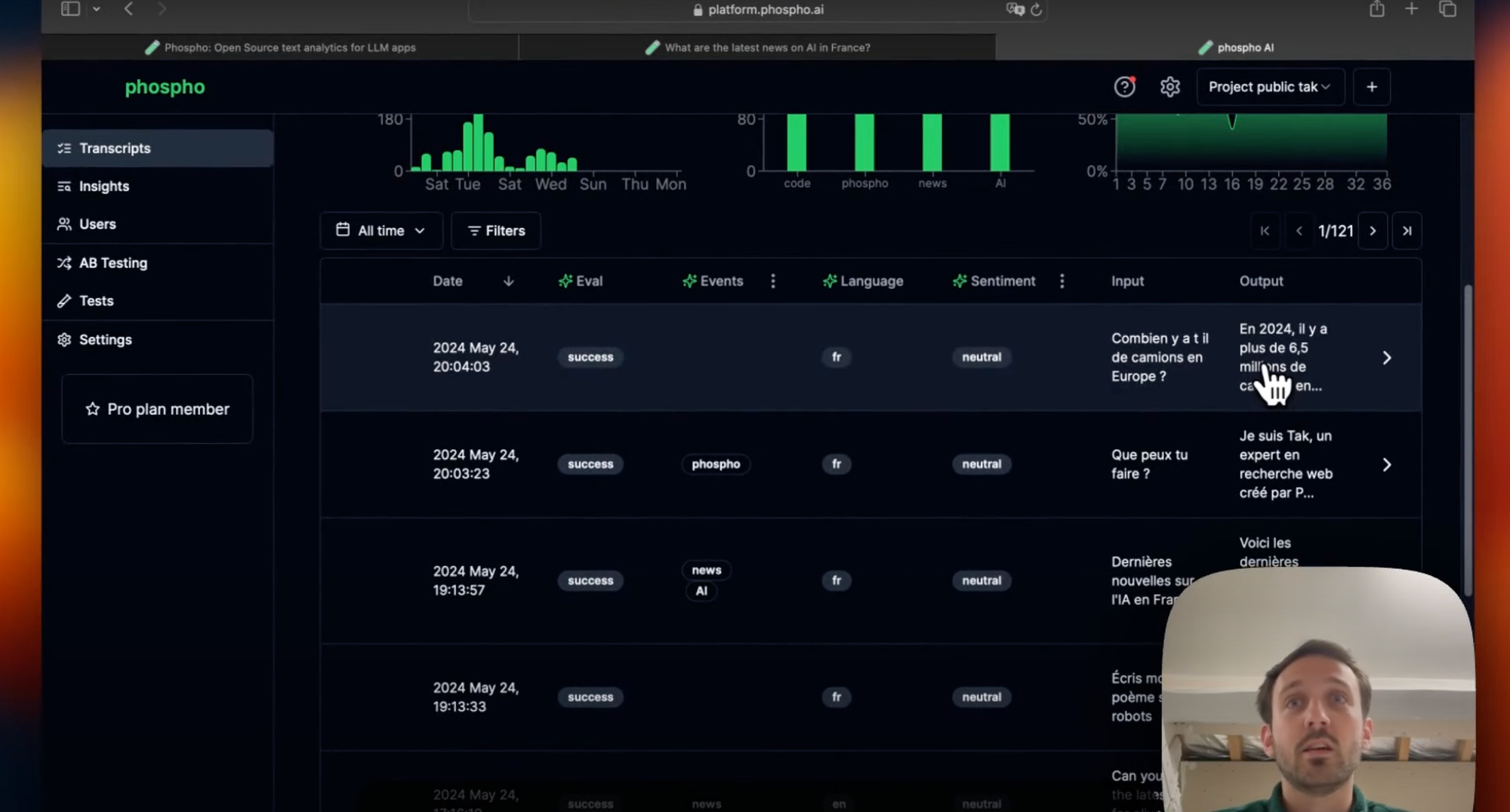
Exciting news, phospho is now bringing brains to robots!
With phosphobot, you can control robots, collect data, fine-tune robotics AI models, and deploy them in real-time.
Check it out here: robots.phospho.ai.
The Growing Importance of User Analytics in 2024
The biggest shift we’re seeing in the software industry right now is the adoption and integration of Artificial Intelligence (AI).
With that commonly comes conversational features where users are interacting in natural language with your app - setting growing emphasis on more advanced user analytics methods.
These conversations are a much richer source of user feedback and insights than any surveys or traditional analytics can provide.
So AI SaaS startups will need a way to collect, monitor, and analyse this huge data source for user analytics to improve their products, derive new features, and fine tune AI models to be in closer alignment with their users.
User analytics in this way gives a competitive advantage towards:
- Faster product market fit
- More effective iteration cycles
- Sticker products with less churn
The Shift: From Feature Usage to Text Analytics in Conversational AI
User analytics has come a long way since the early days of web tracking and relying on metrics such as page views, click through rates, and basic feature usage analysis.
These metrics were sufficient when our applications were primarily web pages or simple apps with clear user flows.
But now we have products that are expected to have conversational AI capabilities which have brought with it completely new and nuanced user interactions primarily based on text in natural language.
To understand how text analytics holds the key to a successful LLM app in 2024, read this previous article here.
Why Traditional User Analytics Tools Are No Longer Enough
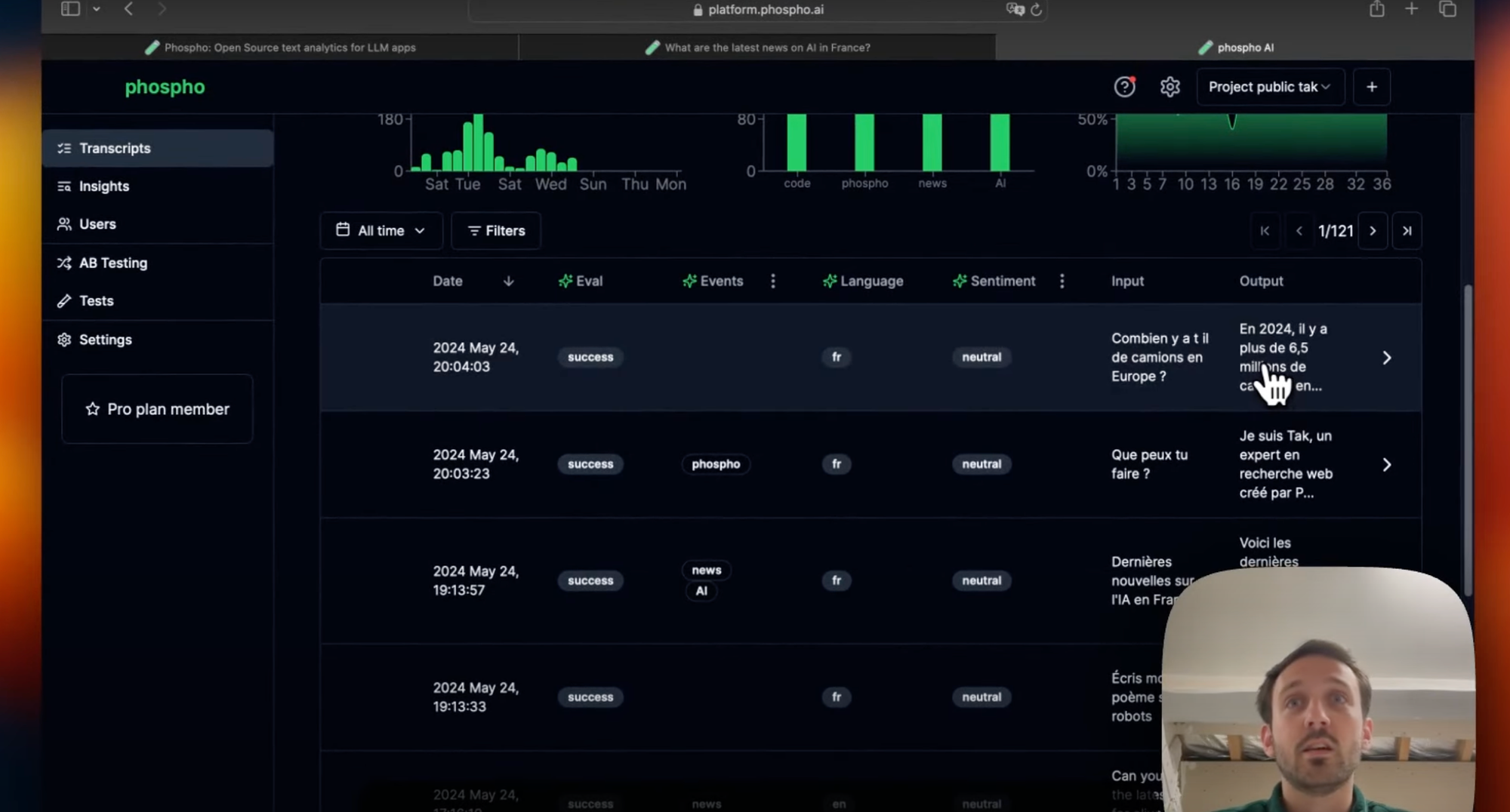
Tracking button clicks and session times doesn’t tell you enough about what the users are saying or what their intentions are - this understanding is what we’re truly after.
Traditional analytics and metrics cannot capture the subtleties of these interactions, and we need more up to date methods of capturing these insights.
Analysing natural language at scale however is a challenge which is why there’s a growing need for advanced text analytics tools like Phoshpo specifically built to provide this for AI integrated apps.
Phospho provides a way to understand users through text analytics with:
- Sentiment analysis
- Intent detection
- Understanding nuanced feedback
… by logging and analysing natural language interactions for insights in a scalable and automated way.
The best way to see how Phospho can do this with your AI product is with our guided example walkthrough here.
For now let’s look at the key features you need for user analytics tools and how Phospho can meet these requirements for you.
Key Features to Look for in User Analytics Tools for 2024
There are a few non-negotiable features you should look for in user analytics tools:
1) Text Analytics
This goes without saying, most apps and products have AI integrated which puts more emphasis on extracting insights from the text based interactions users have. Perform analysis on this data for insight into sentiment, trends, usage patters, pain points, and edge cases.
Phospho: Specifically built for AI apps to provide and leverage insights from text based interactions for faster product market fit.
2) Real-time monitoring

With so many options available today, AI product development in 2024 needs fast iteration and more user alignment to minimise churn. Real-time data and insights provide a competitive edge in gathering fresh and relevant insights for the most effective product iteration cycles.
For a deeper dive on real-time analytics and its competitive advantages: read this.
Phospho: Continuous logging and data visualisation of user interactions with Phospho help teams proactively spot issues, identify trends, and make data driven decisions that are impactful right now, which retrospective data and traditional tools cannot.
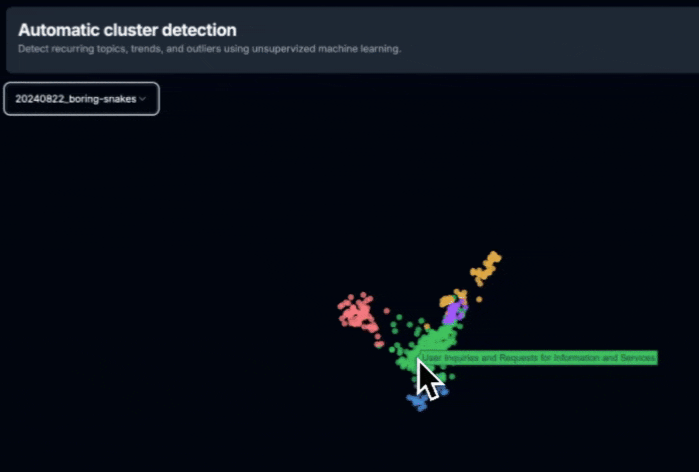
3) Custom KPIs
The insights you can gather from natural language analysis at scale will serve up a lot of edge cases and nuanced scenarios. This is why you’ll need customisable performance metrics to assess LLM outputs and user interactions in more specific detail and flexibility.
Phospho: Set custom KPIs using natural language - offers full flexibility and control over what you measure and visualise so your metrics are tailor made for what matters most to your product right now. Also very useful for testing edge cases and outlier scenarios proactively and easily.
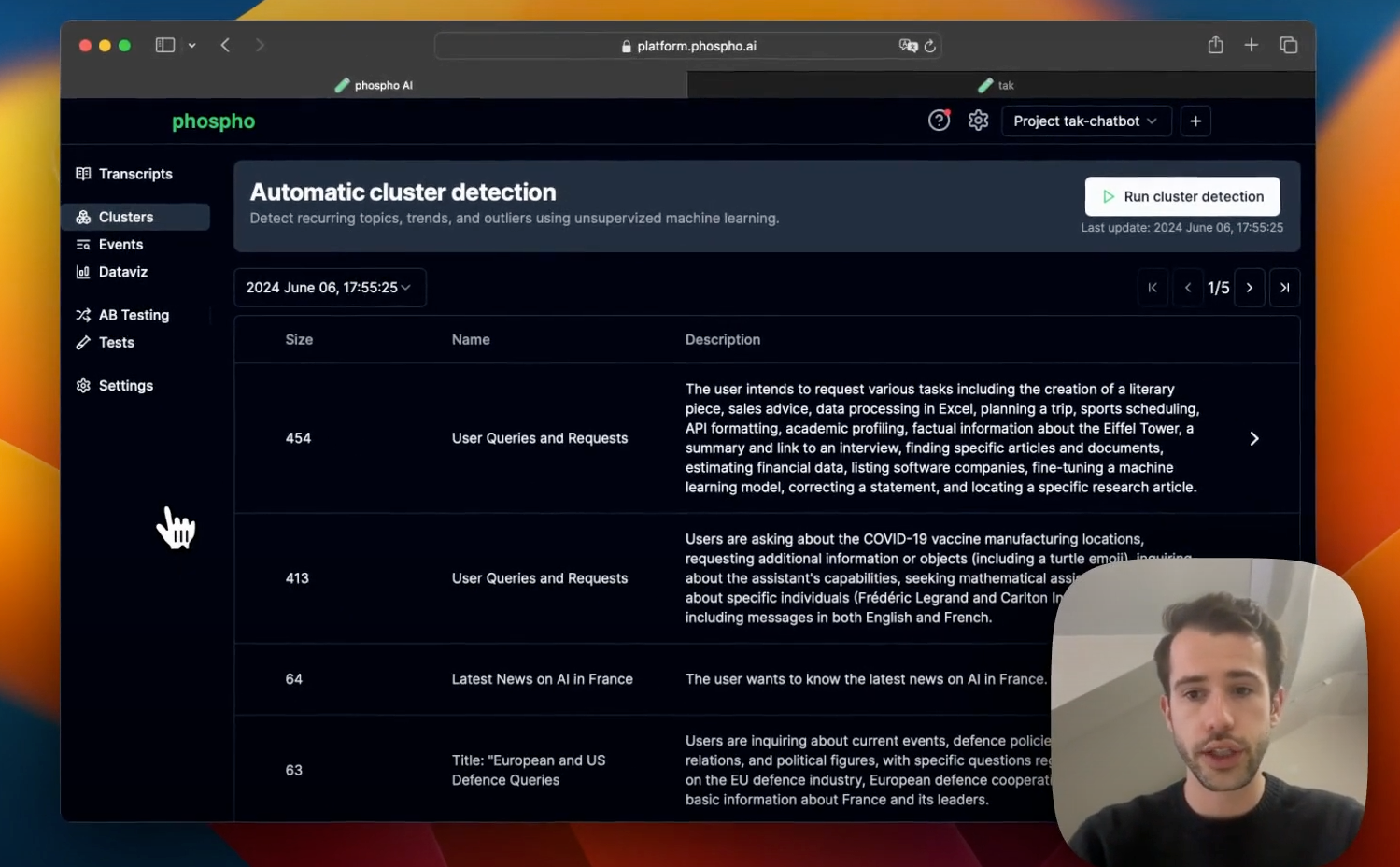
4) Model Evaluation
User analytics doesn’t stop at just understanding your users, it should ultimately be improving your AI models and overall performance. Proper evaluations help identify the most pressing areas of your app to improve.
Phospho: Automated evaluation pipelines in Phospho helps to qualitatively measure performance and test new features or A/B test different app versions for full visibility into how effective your product iterations are.
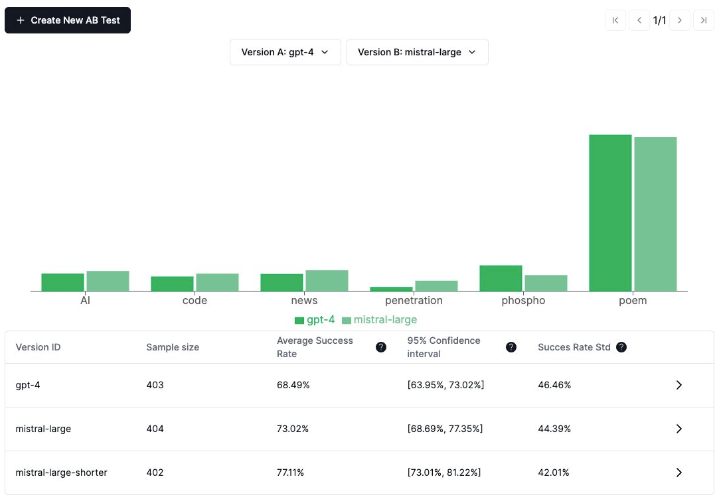
5) Seamless Integration
The best user analytics tool is useless if you can’t connect it with any existing tech stacks or workflows. Prioritise the tools that provide the most important features but also offer easy integration.
Phospho: Easily add Phospho to existing workflows and popular tech stacks such as JavaScript, Python, LangChain etc. Can also just simply import data into a project in Phospho to start seeing through the fog of natural language. For more getting started, see our docs here.
How Phospho is Leading the Next Wave of User Analytics with Text Analytics
You need quality feedback for iteration.
Trying to iterate and improve your AI product without leveraging text analytics is like trying to understand a phone conversation without listening to the call itself.
Traditional tools and surface level metrics simply aren’t made for AI based apps or capturing and understanding nuanced feedback from thousands or millions of in-app conversations.
By adopting tools like Phospho and it’s capabilities, teams can now understand their users on a much deeper level to:
- Understand real user intent (better product improvements)
- Identify pain points and problematic edge cases (reduce churn)
- Personalise experiences (increase stickiness)
And ultimately find product market fit faster with these insights.
AI SaaS startups that don’t leverage text analytics risk falling behind to faster moving companies with access to far more user insights.
Want to take AI to the next level?
At Phospho, we give brains to robots. We let you power any robot with advanced AI – control, collect data, fine-tune, and deploy seamlessly.
New to robotics? Start with our dev kit.
👉 Explore at robots.phospho.ai.
